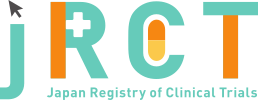臨床研究等提出・公開システム
|
April. 27, 2024 |
|
|
Feb. 05, 2025 |
|
|
jRCT2011240011 |
A Phase 3, Open-Label, Multicenter Study to Evaluate the Efficacy, Safety, and Pharmacokinetics of Axatilimab Monotherapy in Japanese Participants With Recurrent or Refractory Active Chronic Graft-Versus-Host Disease After at Least 2 Lines of Systemic Therapy |
|
A Study to Evaluate the Efficacy, Safety, and Pharmacokinetics of Axatilimab Monotherapy in Japanese Participants With Recurrent or Refractory Active Chronic Graft-Versus-Host Disease |
Ono Shintaro |
||
Incyte Biosciences Japan G.K. |
||
Tokyo Midtown Hibiya, 1-1-2 Yurakucho, Chiyoda-ku, Tokyo, Japan |
||
+81-120-094-139 |
||
jpmedinfo@incyte.com |
||
Medical Information Center |
||
Incyte Biosciences Japan G.K. |
||
Tokyo Midtown Hibiya, 1-1-2 Yurakucho, Chiyoda-ku, Tokyo, Japan |
||
+81-120-094-139 |
||
jpmedinfo@incyte.com |
Not Recruiting |
June. 30, 2024 |
||
| July. 30, 2024 | ||
| 20 | ||
Interventional |
||
single arm study |
||
open(masking not used) |
||
uncontrolled control |
||
single assignment |
||
treatment purpose |
||
1. At least 6 years of age at the time of signing the ICF. |
||
1. Has aGVHD without manifestations of cGVHD. |
||
| 6age old over | ||
| No limit | ||
Both |
||
Chronic Graft-versus-host-disease |
||
Axatilimab at the protocol-defined dose. |
||
Overall Response Rate in the First 6 Cycles |
||
1. Proportion of participants with a >= 7-point improvement in modified Lee symptom scale (mLSS) score |
||
| Incyte Biosciences Japan G.K. |
| Hokkaido University Hospital Institutional Review Board (The first approved IRB is shown) | |
| Kita 14, Nishi 5, Kita-ku, Sapporo, Hokkaido, 060-8648, Japan, Hokkaido | |
+81-11-706-7061 |
|
| tiken@med.hokudai.ac.jp | |
| Approval | |
April. 16, 2024 |
Yes |
|
Incyte shares data with qualified external researchers after a research proposal is submitted. These requests are reviewed and approved by a review panel on the basis of scientific merit. All data provided is anonymized to respect the privacy of patients who have participated in the trial in line with applicable laws and regulations. The trial data availability is according to the criteria and process described on https://www.incyte.com/our-company/compliance-and-transparency |
| NCT06263478 | |
| Clinical Trials.gov |
none |
